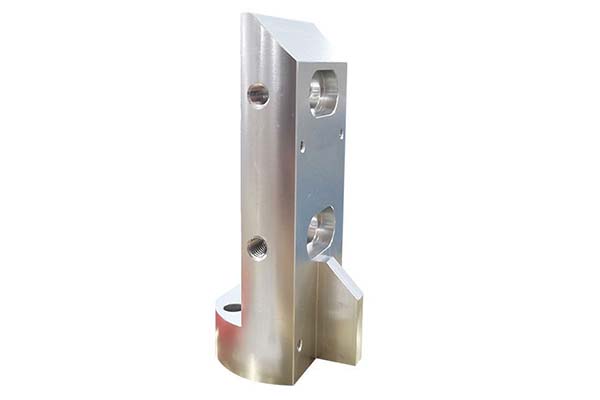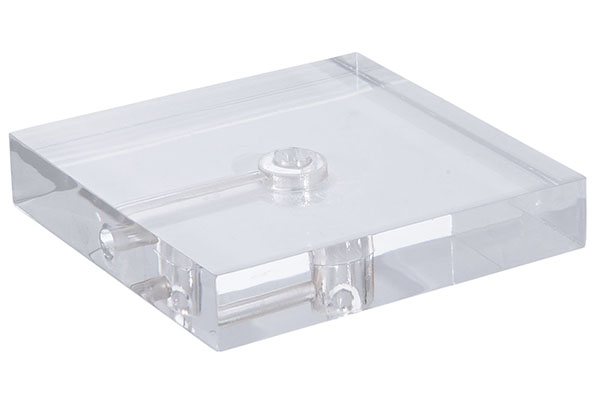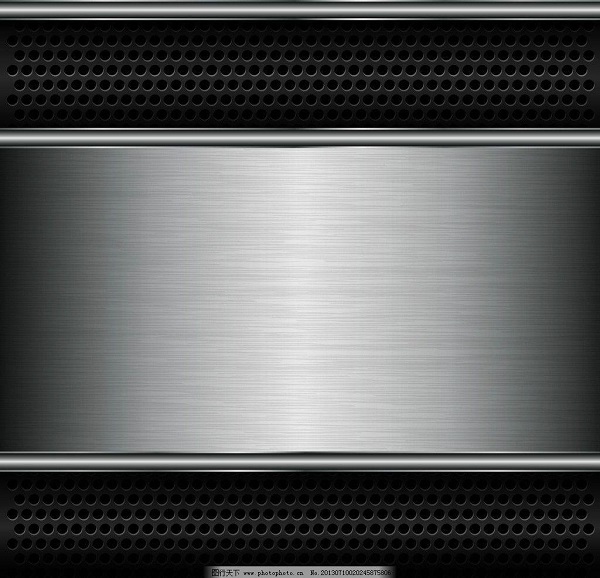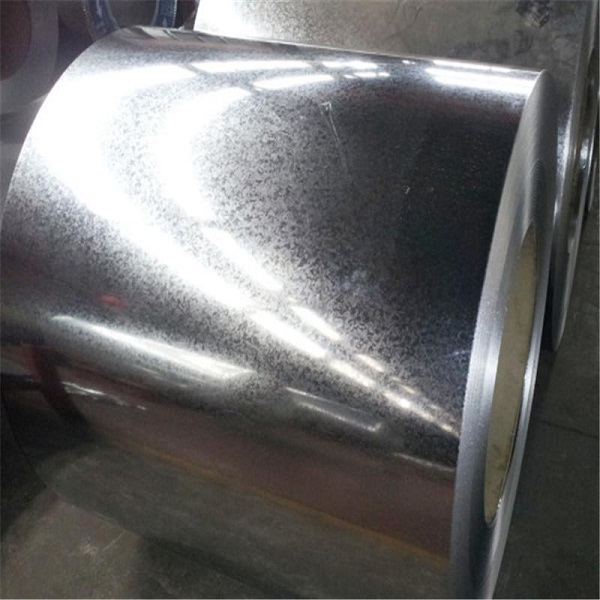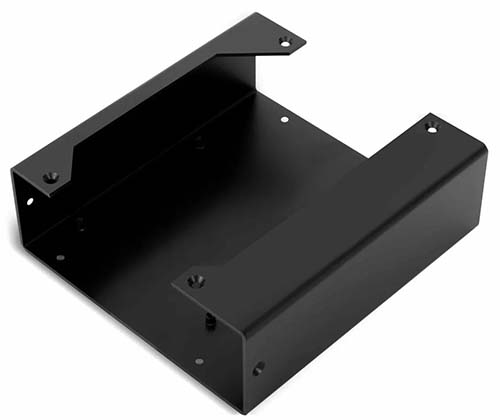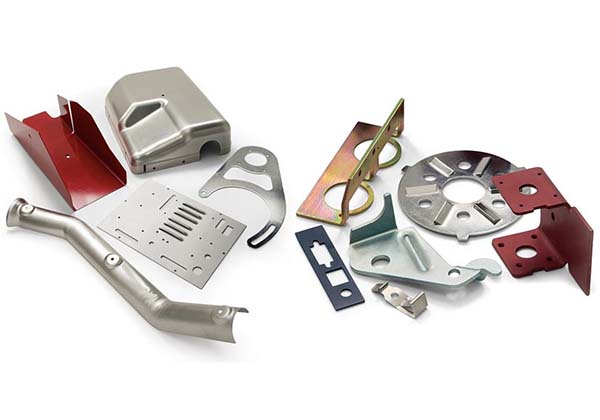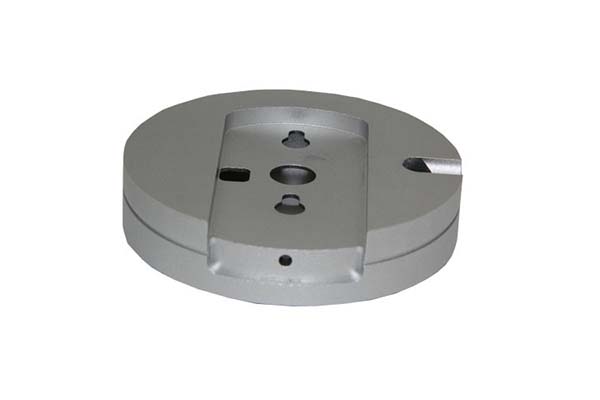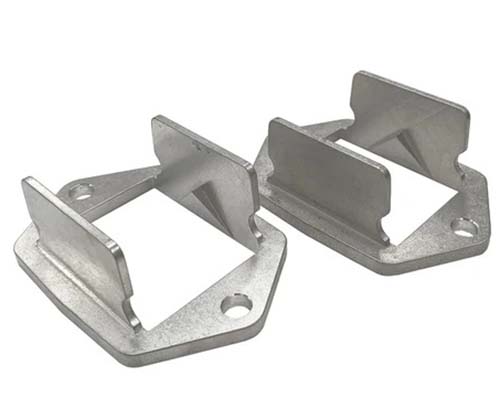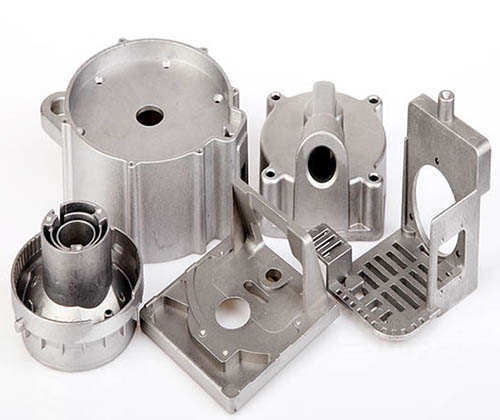1. Introduction: The Silent Engine of Modern Manufacturing
In an era where product innovation and operational efficiency define competitive edge, precision sheet metal parts have emerged as a cornerstone of modern manufacturing. These components—crafted with micron - level accuracy from materials like aluminum, stainless steel, and copper—enable the production of lightweight, durable, and geometrically complex structures across industries, from aerospace to consumer electronics.
For Yigu Technology instance, in the aerospace industry, every component must meet stringent standards for weight, strength, and precision. Precision sheet metal parts are used to create aircraft frames, engine components, and interior structures. A study by Boeing revealed that the use of advanced precision sheet metal parts in their latest aircraft models has reduced the overall weight by 15%, leading to a 12% increase in fuel efficiency. This not only showcases the importance of precision sheet metal parts in enhancing product performance but also highlights their role in driving down operational costs.
This article unravels the core secrets of how these parts transform manufacturing, backed by data, case studies, and actionable insights for engineers and industrial planners. By delving into the material properties, manufacturing techniques, design considerations, and real - world applications, we aim to provide a comprehensive understanding of how precision sheet metal parts can be a game - changer for your manufacturing processes.
2. Secret 1: Unmatched Precision Redefining Quality Standards
2.1 The Science of Precision: Accuracy vs. Precision
At the heart of precision sheet metal parts lies a nuanced understanding of two critical concepts: accuracy and precision. These terms, often used interchangeably in casual conversation, have distinct meanings in the context of manufacturing, especially when it comes to creating parts with micron - level tolerances.
Accuracy refers to how closely a measured value aligns with the true or target value. In sheet metal fabrication, this means that the final dimensions of the part match the design specifications as closely as possible. For Yigu Technology example, in general sheet metal parts, an accuracy tolerance of ±0.1mm might be acceptable. However, in high - precision components, such as those used in aerospace or medical devices, the accuracy requirement can be as tight as ±0.05mm. This level of accuracy ensures that the part will fit seamlessly into the final product assembly, reducing the need for additional machining or adjustment.
Precision, on the other hand, is about the repeatability of measurements. It measures how consistent the results are when the same operation is performed multiple times. In modern precision sheet metal manufacturing, computer - numerical - control (CNC) systems have revolutionized the ability to achieve high precision. These systems can achieve a standard deviation of ≤0.02mm across production batches. This means that if you were to produce 100 identical parts, the variation in their dimensions would be extremely small, ensuring a high level of consistency in quality.
To illustrate the difference, consider the analogy of a marksman shooting at a target. Accuracy is hitting the bullseye, while precision is hitting the same spot on the target every time, even if it's not the bullseye. In manufacturing, both accuracy and precision are crucial. High - precision processes enable manufacturers to produce parts with consistent quality, while high - accuracy ensures that these parts meet the exact requirements of the design.
2.2 Comparative Analysis: Traditional vs. Precision Sheet Metal Fabrication
The shift from traditional to precision sheet metal fabrication techniques represents a paradigm shift in manufacturing capabilities, with far - reaching implications for product quality, cost - effectiveness, and design flexibility. A detailed comparison of the two methods reveals the magnitude of these differences:
| Comparison Criteria | Traditional Sheet Metal Fabrication | Precision Sheet Metal Fabrication | Improvement Percentage |
| Dimensional Tolerance | ±0.5mm | ±0.05–0.1mm | 90% improvement in accuracy |
| Surface Finish (Ra value) | 12.5μm | 1.6–3.2μm | 80% smoother surface |
| Material Utilization | 60–70% | 90–95% | 30% less material waste |
| Design Complexity | Limited to simple bends | Supports louvers, embossing, and micro - holes | 100% design freedom |
A real - world example of the benefits of precision sheet metal fabrication can be seen in the medical device industry. A leading medical device manufacturer switched from traditional to precision sheet metal parts for the production of a critical component in their diagnostic equipment. As a result, they were able to reduce component rejection rates from 15% to 2%, saving $500,000 annually in rework costs. This case study highlights the significant impact that precision sheet metal parts can have on both product quality and bottom - line profitability.
3. Secret 2: Design Flexibility for Complex Geometries
3.1 Advanced Fabrication Techniques
Precision sheet metal parts are the result of a confluence of advanced fabrication techniques that push the boundaries of what is possible in terms of design complexity. These techniques leverage the latest in technological innovation to create parts with intricate geometries and high - quality finishes.
Laser Cutting: This technique uses a high - power laser beam to cut through sheet metal with extreme precision. The laser beam vaporizes, melts, or burns the material, creating a clean and accurate cut. Laser cutting can achieve a precision of up to 0.05mm, making it ideal for creating parts with intricate profiles. For Yigu Technology example, in the aerospace industry, brackets with complex cutouts are often produced using laser cutting. These brackets need to have precise dimensions to ensure proper fit and function within the aircraft structure. A study by Airbus found that the use of laser - cut precision sheet metal brackets reduced assembly time by 30% due to their exact fit, eliminating the need for time - consuming adjustments.
CNC Bending: Computer - Numerical - Control (CNC) bending machines use 3D modeling software to precisely control the bending process. This allows for the creation of parts with multi - angle bends, such as 90°±0.5°. In the production of enclosures and structural frames, CNC bending enables the creation of complex shapes that are both aesthetically pleasing and structurally sound. For instance, in the electronics industry, the enclosures for high - end audio equipment often require precise bends to house the internal components and provide a sleek appearance. A leading audio equipment manufacturer reported that by using CNC - bent precision sheet metal enclosures, they were able to improve the product's heat dissipation efficiency by 20% due to the optimized internal space.
Stamping with Progressive Dies: Progressive die stamping is a high - volume manufacturing process that uses a series of dies to perform multiple operations on a sheet metal strip in a single pass. This technique is highly efficient for mass - producing uniform parts, such as automotive heat shields. With progressive die stamping, a first - pass yield of 99.8% can be achieved, minimizing waste and production costs. Automotive manufacturers rely on this process to produce large quantities of heat shields that meet strict quality standards. For example, a major car manufacturer produces over 100,000 heat shields per month using progressive die stamping, with a defect rate of less than 0.2%.
3.2 Enabling Innovation in Product Design
The advanced fabrication techniques used in Yigu Technology precision sheet metal manufacturing have opened up new possibilities for product design, allowing manufacturers to create innovative products that meet the evolving needs of consumers and industries.
3.2.1 Lightweighting for Aerospace
In the aerospace industry, reducing weight is a constant pursuit, as every kilogram saved can lead to significant fuel savings and increased performance. Precision sheet metal parts play a crucial role in achieving this goal. Boeing's 787 Dreamliner is a prime example of how precision sheet metal technology has been used to revolutionize aircraft design.
The 787 Dreamliner uses precision - crafted aluminum alloy (6061 - T6) sheet metal parts with innovative weight - reducing features. Louvered vents are incorporated into the design to improve ventilation while minimizing weight. These vents are laser - cut with micron - level precision to ensure optimal air flow and structural integrity. Additionally, ribbed structures are added to the sheet metal parts to enhance strength without adding excessive weight. Through these design innovations, the weight of the components has been reduced by 20% compared to traditional aircraft designs. This weight reduction has led to a 15% increase in fuel efficiency, making the 787 Dreamliner more environmentally friendly and cost - effective to operate.
3.2.2 Miniaturization in Electronics
In the consumer electronics industry, the demand for smaller, more powerful devices has driven the need for components that can be miniaturized without sacrificing performance. Precision sheet metal parts are at the forefront of this trend, enabling the creation of sleek and durable products.
Apple, for example, relies on precision stainless steel (304) sheets to craft the casings of its smartphones. The use of precision sheet metal fabrication techniques allows for the production of casings with a wall thickness of just 0.3mm, while maintaining seamless edge finishes. This not only gives the smartphones a sleek and elegant appearance but also provides excellent protection for the internal components. The precision - crafted casings also contribute to the overall durability of the device, withstanding everyday wear and tear. A consumer electronics research firm found that smartphones with precision - made stainless steel casings had a 30% lower failure rate due to physical damage compared to those with traditional plastic casings.
5. Industry Transformations Driven by Precision Sheet Metal Parts
5.1 Aerospace: Lightweight Strength for Flight
5.1.1 Structural Components
In the aerospace industry, every gram of weight reduction can translate into significant fuel savings and enhanced performance over the lifespan of an aircraft. Precision sheet metal parts have emerged as a crucial solution for achieving this goal, particularly in the production of structural components.
The Airbus A350 XWB, for example, is a marvel of modern engineering that relies heavily on precision sheet metal technology. The wing ribs of the A350 XWB are crafted from precision - formed titanium alloy (Ti - 6Al - 4V) sheet metal parts. This choice of material and manufacturing process has led to a 15% weight reduction compared to traditional aluminum parts. Moreover, the fatigue life of these components has improved by 25%. This is a significant advantage, as aircraft components are subjected to repeated stress cycles during flight, and a longer fatigue life means fewer maintenance intervals and increased aircraft availability.
The use of titanium alloy in the A350 XWB's wing ribs also contributes to its overall structural integrity. Titanium is known for its high strength - to - weight ratio, corrosion resistance, and ability to withstand high temperatures. Precision manufacturing techniques ensure that the sheet metal parts are formed with the exact specifications required, allowing for optimal load distribution and improved aerodynamic performance.
5.1.2 Engine Components
Engine components in aircraft must withstand extreme conditions, including high temperatures, high pressures, and rapid changes in stress. Precision sheet metal parts play a vital role in ensuring the efficient operation of jet engines.
GE Aviation, a leading manufacturer of aircraft engines, uses laser - cut stainless steel (316L) sheets for the heat exchanger fins in its jet engines. These fins are designed with a slot spacing of just 0.1mm, enabling a 30% improvement in thermal efficiency. The precise laser - cutting process allows for the creation of fins with complex geometries, which are essential for maximizing heat transfer.
In jet engines, heat exchanger fins are responsible for cooling the engine oil and other fluids, ensuring that the engine operates within the optimal temperature range. The high - precision manufacturing of these fins using stainless steel sheets not only improves thermal efficiency but also enhances the durability of the engine components. Stainless steel is resistant to corrosion and oxidation, making it an ideal material for use in the harsh environment of a jet engine.
5.2 Automotive: Driving Performance and Safety
5.2.1 Electric Vehicle (EV) Batteries
As the automotive industry shifts towards electric vehicles (EVs), the demand for high - performance battery systems has become a key focus. Precision sheet metal parts are integral to the design and functionality of EV batteries, particularly in the area of thermal management.
Tesla, a pioneer in the EV market, uses precision - crafted aluminum (5052 - H32) sheets for its battery enclosures. These enclosures are designed with integrated cooling channels, which play a crucial role in maintaining the optimal operating temperature of the battery cells. By effectively dissipating heat, the cooling channels improve heat dissipation by 40% compared to traditional battery designs. This not only enhances the performance and lifespan of the battery but also enables faster charging rates.
In EVs, the battery is the most critical component, and its performance directly impacts the vehicle's range, acceleration, and overall efficiency. The use of precision sheet metal parts in battery enclosures allows for better thermal management, which is essential for preventing overheating and ensuring the long - term reliability of the battery. The 5052 - H32 aluminum alloy is chosen for its excellent corrosion resistance, high strength - to - weight ratio, and good thermal conductivity, making it an ideal material for this application.
5.2.2 Safety - Critical Parts
Safety is a top priority in the automotive industry, and precision sheet metal parts are used in a variety of safety - critical components, such as advanced driver - assistance system (ADAS) sensors.
Volvo, a company renowned for its commitment to safety, houses its ADAS sensors in precision - made steel enclosures. These enclosures are designed to meet the IP67 - rated water - resistance standard, ensuring that the sensors remain fully functional even in extreme environmental conditions. Whether it's heavy rain, snow, or high humidity, the precision - crafted enclosures protect the sensitive sensors from water ingress, which could otherwise lead to sensor failure and compromise the safety of the vehicle.
ADAS sensors, such as cameras, radar, and lidar, are essential for functions like automatic emergency braking, lane - keeping assist, and adaptive cruise control. The reliability of these sensors is crucial for the proper operation of ADAS systems, and precision sheet metal enclosures play a vital role in providing the necessary protection. The use of high - quality steel in the enclosures ensures that they are strong enough to withstand impacts and vibrations, while the precision manufacturing process ensures a perfect fit and seal, preventing water and dust from entering.
5.3 Electronics: Miniaturization and Aesthetics
5.3.1 Consumer Devices
In the highly competitive consumer electronics market, the demand for sleek, durable, and high - performing devices has led to a growing reliance on precision sheet metal parts. These parts enable manufacturers to achieve the perfect balance between form and function, as seen in Samsung's Galaxy Z Fold series.
The Galaxy Z Fold uses precision stainless steel (17 - 4 PH) hinges with an astonishing positional accuracy of 0.02mm. This high level of precision allows the device to withstand over 200,000 bend cycles without significant wear. The hinge is a critical component in foldable smartphones, as it must be able to support the repeated opening and closing of the device while maintaining its structural integrity.
The use of 17 - 4 PH stainless steel in the hinge provides a combination of high strength, corrosion resistance, and good fatigue life. The precision manufacturing process ensures that the hinge components are fabricated with the exact tolerances required, allowing for smooth and reliable operation. This not only enhances the user experience but also increases the product's lifespan, making it more appealing to consumers.
5.3.2 Industrial Electronics
In the industrial electronics sector, precision sheet metal parts are used to create enclosures that provide protection against electromagnetic interference (EMI) and radio - frequency interference (RFI). Siemens, a global leader in industrial electronics, uses precision sheet metal enclosures in its control panels for smart factories.
These enclosures are designed with EMI/RFI shielding features, which reduce signal interference by 90% compared to standard enclosures. In a smart factory environment, where multiple electronic devices are operating in close proximity, electromagnetic interference can disrupt the normal operation of equipment and lead to errors in data transmission.
The precision manufacturing of the sheet metal enclosures allows for the integration of advanced shielding materials and techniques. The enclosures are fabricated with tight tolerances to ensure a seamless fit, minimizing the gaps through which electromagnetic waves can penetrate. This not only improves the reliability of the control panels but also enhances the overall performance of the smart factory systems.
6. Conclusion: The Precision Imperative in Manufacturing
Yigu Technology Precision sheet metal parts are the unsung heroes of modern manufacturing, quietly yet powerfully driving innovation and efficiency across a vast spectrum of industries. They are not merely components; they are the linchpins that enable the creation of products that are lighter, stronger, more efficient, and more technologically advanced.
The aerospace industry's pursuit of fuel - efficiency and enhanced performance is significantly aided by precision sheet metal parts. These parts reduce the weight of aircraft, leading to substantial fuel savings over the lifespan of the aircraft. In the automotive sector, precision sheet metal parts contribute to both the performance of electric vehicle batteries and the safety of critical components like ADAS sensors. In the electronics industry, they enable the miniaturization and aesthetic appeal that consumers demand in their devices.
As we look to the future, the role of precision sheet metal parts will only become more crucial. With the ongoing trends towards automation, sustainability, and digital integration in manufacturing, these parts will continue to be at the forefront. Automation will further enhance the precision and efficiency of their production, while sustainability initiatives will drive the use of more environmentally friendly materials and manufacturing processes.
In Yigu Technology conclusion, precision sheet metal parts are the cornerstone of modern manufacturing. They have the power to transform your manufacturing processes, enabling you to create products that are not only competitive in the market but also set new standards for quality, performance, and innovation.
FAQ: Common Questions About Precision Sheet Metal Parts
Q1: What materials are best suited for precision sheet metal parts?
A1: Popular materials include aluminum (for lightweighting), stainless steel (for corrosion resistance), copper (for thermal conductivity), and titanium (for high - strength aerospace applications). The choice depends on mechanical properties, environmental exposure, and cost considerations. Aluminum, for example, is a popular choice in the automotive and consumer electronics industries due to its low density, which helps in reducing the weight of the final product. Stainless steel, on the other hand, is preferred in applications where the part will be exposed to harsh environmental conditions, such as in marine or medical equipment.
Q2: How do I ensure consistent quality in precision sheet metal parts?
A2: Look for manufacturers with ISO 9001 certification, in - process CMM inspections, and SPC - driven quality control. Request material certifications (e.g., mill test reports) and case studies of similar projects to validate their expertise in your target material and geometry. ISO 9001 certification ensures that the manufacturer follows a set of international standards for quality management. In - process CMM (Coordinate Measuring Machine) inspections allow for real - time measurement and verification of the part's dimensions, while SPC (Statistical Process Control) - driven quality control helps in detecting and preventing variations in the manufacturing process.
Q3: Is precision sheet metal fabrication cost - effective for low - volume production?
A3: Yes, thanks to flexible technologies like laser cutting and CNC bending that eliminate the need for custom tooling. For batches of 1 - 500 units, precision sheet metal parts are often 20 - 30% cheaper than injection - molded or cast alternatives, with faster turnaround times for design iterations. Laser cutting and CNC bending are highly flexible manufacturing processes that can be easily programmed to produce different part geometries without the need for expensive custom tooling. This makes them ideal for low - volume production, where the cost of custom tooling can be a significant barrier. The faster turnaround times also allow for quicker design iterations, which is crucial in product development.
